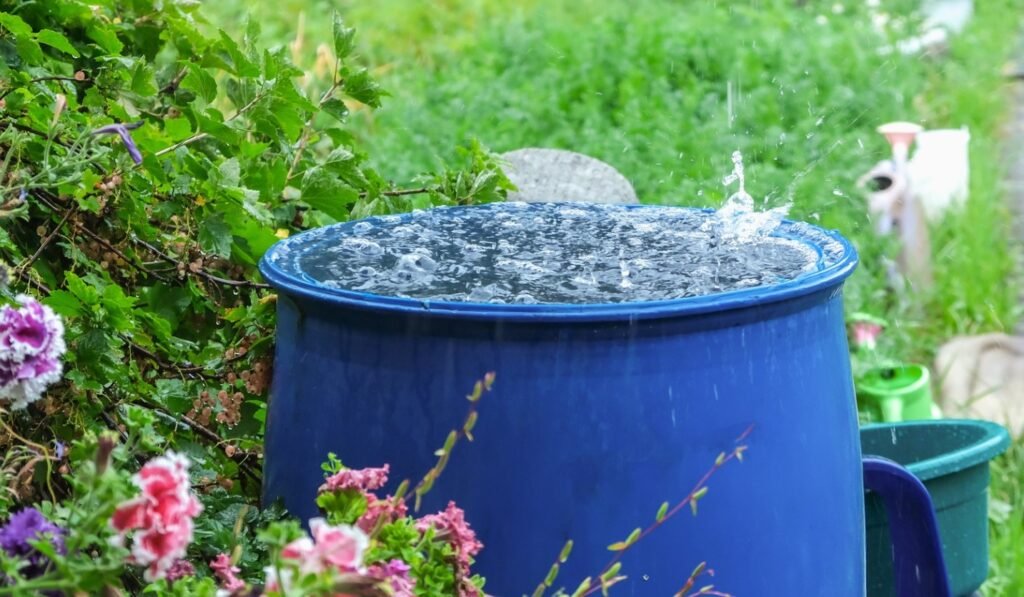Rain barrels are a great way to collect and store rainwater for your garden, lawn, or other outdoor needs. They can help you save money on your water bill, conserve water resources, and reduce stormwater runoff that can pollute local waterways. However, using a rain barrel is not as simple as just placing a container under your downspout. There are some common mistakes that you should avoid when harvesting rainwater with a do-it-yourself system. Here are some tips on how to use a rain barrel without making these common mistakes.
Choose the Right Size and Location for Your Rain Barrel
One of the first things you need to consider when setting up a rain barrel is the size and location of your container. You want to choose a barrel that is large enough to accommodate the amount of rainwater you expect to collect from your roof. A general rule of thumb is that one inch of rain on a 1,000-square-foot roof can produce about 600 gallons of water. Therefore, you may need more than one barrel or a larger barrel to capture all the rainwater from your roof.

You also want to choose a location that is convenient and safe for your rain barrel. You should place your barrel near the area where you plan to use the water, such as your garden or lawn. You should also make sure that your barrel is stable and secure on a level surface, preferably on a raised platform or stand. You don’t want your barrel to tip over or roll away during a storm or when you are using the water.
Install an Overflow System and a Screen for Your Rain Barrel
Another important thing you need to do when using a rain barrel is to install an overflow system and a screen for your container. An overflow system is a way to divert excess water from your barrel when it is full. This can prevent water from spilling over the edge of your barrel and causing erosion or damage to your foundation. You can install an overflow spigot near the top of your barrel that can be connected to a hose or another barrel. You can also use a diverter on your downspout that can switch the flow of water from your barrel to the drain when your barrel is full.
A screen is a way to prevent debris and insects from entering your barrel. Debris such as leaves, twigs, or dirt can clog your spigot or hose and reduce the quality of your water. Insects such as mosquitoes can breed in stagnant water and pose a health risk to you and your family. You can use a fine mesh screen or a lid with holes to cover the opening of your barrel. You should also clean your screen regularly to remove any accumulated debris.
Treat and Filter Your Rainwater Before Using It
One of the most common mistakes that people make when using a rain barrel is assuming that the rainwater is safe and clean for any purpose. However, rainwater can contain contaminants such as dust, pollen, bird droppings, chemicals, or bacteria that can affect its quality and safety. Therefore, you should always treat and filter your rainwater before using it, especially if you plan to use it for drinking, cooking, or washing.
There are different ways to treat and filter your rainwater depending on your needs and preferences. You can use chlorine, bleach, iodine, or boiling to disinfect your water and kill any harmful microorganisms. You can also use carbon filters, sand filters, or reverse osmosis systems to remove any impurities or odors from your water. You should also test your water regularly with a kit or a meter to check its pH level, hardness, and turbidity.
Use Your Rainwater Wisely and Maintain Your Rain Barrel
Finally, you should use your rainwater wisely and maintain your rain barrel properly. You should use your rainwater within a week or two of collecting it to prevent it from becoming stale or stagnant. You should also use it sparingly and efficiently for your outdoor needs, such as watering plants, washing cars, or filling pools. You should avoid using it for indoor needs, such as flushing toilets, bathing, or laundry, unless you have treated and filtered it adequately.
You should also maintain your rain barrel regularly to keep it in good condition and extend its lifespan. You should inspect your barrel for any cracks, leaks, or damage and repair them as soon as possible. You should also drain and clean your barrel at least once a year or more often if needed. You should scrub the inside of your barrel with soap and water and rinse it thoroughly with fresh water. You should also store your barrel in a dry and shaded place during the winter or when not in use.
By following these tips, you can use a rain barrel without making these common mistakes and enjoy the benefits of harvesting rainwater for years to come.
